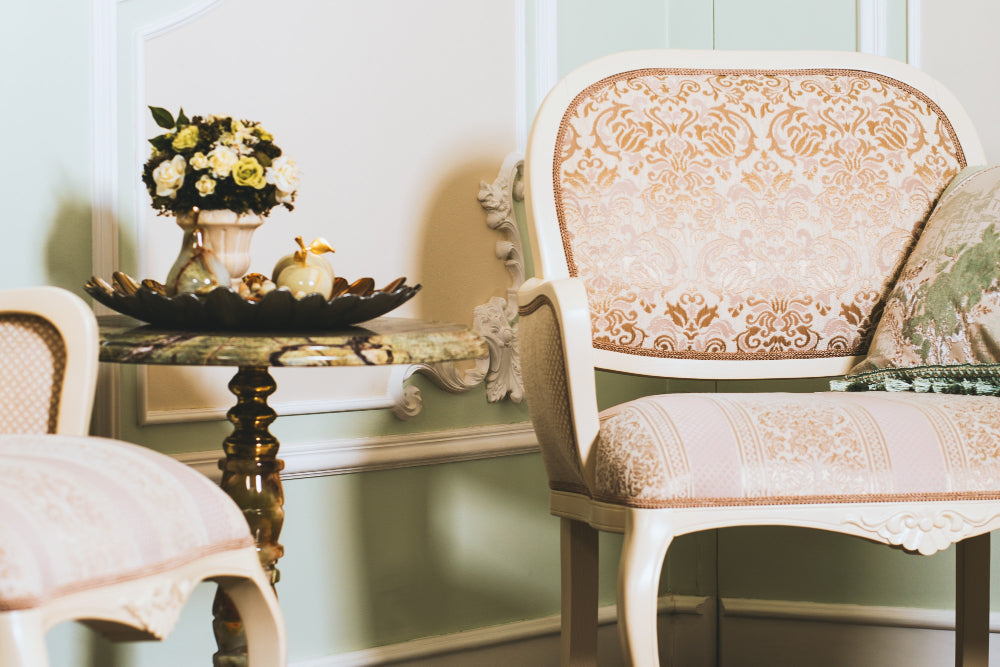French vintage furniture exudes a timeless charm, with each piece carrying a story of craftsmanship, history, and sophistication. From the ornate styles of Louis XVI to the sleek lines of Art Deco, exploring these iconic designs offers a glimpse into the rich cultural heritage of France. In this blog post, we embark on a journey through the fascinating world of French vintage furniture, uncovering the unique characteristics of each style and discovering how to integrate these treasures into contemporary interiors.
Louis XVI: Elegance and Opulence The reign of Louis XVI, spanning from 1774 to 1792, marked a period of refined taste and lavish opulence in French furniture design. Influenced by Neoclassical aesthetics, Louis XVI furniture is characterized by symmetrical lines, delicate ornamentation, and a sense of grandeur. Chairs feature tapered legs, often adorned with intricate carvings and gilt accents, while tables boast marble tops and decorative inlays. Cabinets and commodes showcase exquisite marquetry, showcasing the skill of master craftsmen. To incorporate Louis XVI furniture into modern interiors, opt for neutral color palettes and minimalist décor to allow these pieces to shine as statement focal points.
Empire: Imperial Grandeur Following the French Revolution, the Empire style emerged as a celebration of imperial power and grandeur under the reign of Napoleon Bonaparte. Empire furniture is characterized by bold, monumental designs that evoke a sense of strength and authority. Influenced by ancient Roman and Egyptian motifs, pieces feature rich mahogany woods, gilt bronze mounts, and intricate detailing. Chairs and sofas boast voluptuous forms, often upholstered in luxurious fabrics such as velvet or silk. To infuse a touch of Empire style into contemporary spaces, incorporate statement pieces such as a majestic canopy bed or a commanding console table, paired with modern accents for a harmonious blend of old and new.
Art Nouveau: Organic Forms and Whimsical Elegance Emerging at the turn of the 20th century, Art Nouveau embraced flowing lines, organic forms, and nature-inspired motifs. French Art Nouveau furniture embodies a sense of whimsy and romance, with sinuous curves and intricate floral patterns adorning each piece. Chairs feature elongated backs and delicate cabriole legs, while tables showcase intricate marquetry and sculptural bases. Cabinets and sideboards often incorporate stained glass panels and botanical motifs, adding a touch of ethereal beauty to any interior. To incorporate Art Nouveau furniture into modern spaces, opt for soft, pastel hues and organic materials such as wood and glass, creating a serene and harmonious ambiance.
Art Deco: Glamour and Sophistication The Art Deco movement emerged in the 1920s and 1930s, characterized by sleek lines, geometric shapes, and luxurious materials. French Art Deco furniture epitomizes glamour and sophistication, with bold designs that exude a sense of modernity and opulence. Chairs and sofas feature streamlined silhouettes, often upholstered in sumptuous fabrics such as velvet or leather. Tables boast geometric forms and glossy lacquered finishes, while cabinets showcase exotic woods and chrome accents. To incorporate Art Deco furniture into contemporary interiors, embrace bold colors such as emerald green or sapphire blue, and accessorize with metallic accents and geometric patterns for a touch of old Hollywood glamour.
French vintage furniture offers a treasure trove of timeless elegance and exquisite craftsmanship, from the refined opulence of Louis XVI to the whimsical allure of Art Deco. By understanding the distinct characteristics of each style and learning how to integrate these pieces into modern interiors, we can create spaces that celebrate the rich cultural heritage of France while adding a touch of old-world charm to our homes. Whether you're drawn to the elegance of Louis XVI or the glamour of Art Deco, French vintage furniture invites us to embark on a journey through history, where each piece tells a story of craftsmanship, beauty, and timeless sophistication.
